.6 F. April temperatures are averaging .6 degrees warmer than normal in the metro area.
70 F. possible Friday afternoon close to home.
T-storms possible late Friday night and Saturday morning (probably not severe).
33 tornadoes reported Tuesday across the USA (SPC).
Planetarium. Minnesota needs one (see editorial below).

Who Is America's Worst Weatherman? The answer below - and no, it's not me. I'm a close second.

Rainfall Amounts. NWS Doppler estimates show 1.5 to 2" of rain across much of the Twin Cities metro area. That's 2-3 weeks worth of rain in less than 24 hours. Click here to see the latest data, courtesy of NOAA.
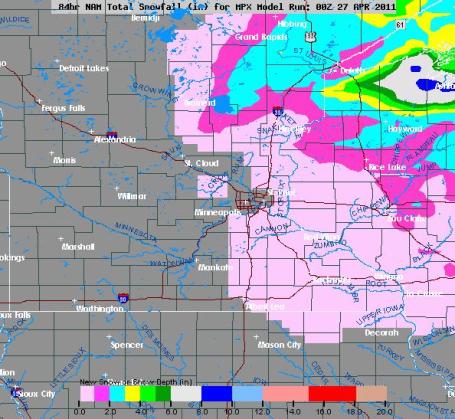
A Close Call. Yes, a few snowflakes may mix in with the showers and sprinkles today - probably no accumulation on lawns or fields in the immediate metro area, but a coating of slush is possible east of St. Paul, maybe 2-3" closer to Rice Lake, Ashland and Siren. As much as 4-8" or more may pile up over far northern Wisconsin. Ugh.

Wisconsin Spring. As of 9:43 pm Drummond, in Bayfield County Wisconsin, had already picked up a healthy (?) 5.8" of heavy wet snow. Yes, it could be worse. To see the latest snowfall tallies from the Duluth area into Wisconsin click here, data courtesy of the National Weather Service.
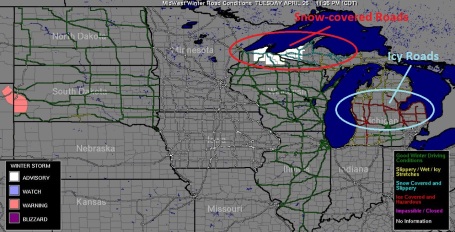
Time Warp. Is this REALLY the 27th day of April? Is the sun REALLY as high in the sky as it was back on August 14? Then why are roads snow-covered over northern Wisconsin and the U.P. of Michigan? Click here for the latest Upper Midwest road conditions, courtesy of the University of Wisconsin.
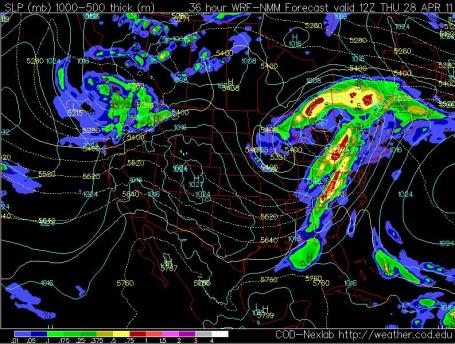
"Backlash". The NAM model valid Thursday morning at 7 am shows "wrap-around" rain wrapping all the way around an area of low pressure centered over Ontario, moisture approaching from the north, keeping us showery and cool through the morning hours Thursday. Nothing more invigorating than a 3 day storm.
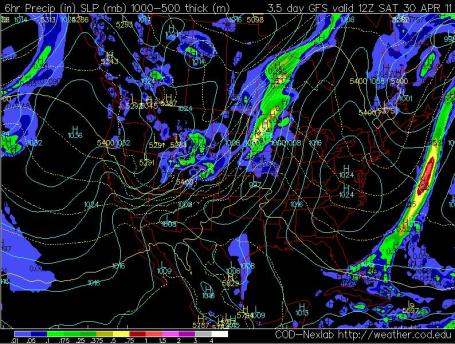
Saturday Morning Thunder? Friday looks sunny (and actually springlike with highs well up into the 60s to near 70). The arrival of a cooler front may spark a line of showers and possible T-storms Saturday morning, but skies should dry out and possibly brighten a bit Saturday afternoon as temperatures fall through the 60s into the 50s, a brisk northwest wind at 10-20, a bit choppy on area lakes. GFS model map above valid Saturday morning at 7 am.

Second Weekend of May - More Like Spring? This is still way out on the horizon, but GFS guidance is hinting at highs in the 60s, possibly some 70s close to home - not this upcoming weekend, but the following weekend, May 7-8. Don't give up on spring just yet.

One Map Tells The Tale. Spring. What spring? High temperatures since mid March have averaged in the low to mid 50s over southwestern and south central Minnesota, summerlike warmth (and tornadoes) coming no closer than St. Louis.

Wednesday Storm Risk. A potentially violent day is shaping up from Huntsville to Nashville to Louisvelle and Cleveland. SPC has a huge swath of America under a "moderate" risk of severe storms, including another potentially major tornado outbreak by late afternoon and evening (tornadoes are most likely around the dinner hour, a couple hours after the maximum temperature of the day, when the atmosphere is most unstable. Click here to see more from SPC.

A Volatile Pattern. The Capital Weather Gang always has great information in their daily contributions to the Washington Post. They have a write-up on the recent tornado outbreak, and the potential for more long-lasting, violent tornadoes again today: "Three dimensional image of the velocity couplet associated with the Vilonia, AR tornado, indicative of strong winds blowing toward and away from the location of the tornado. (NWS). Storm Chaser Reed Timmer tweeted the radar presented “one of the strongest couplets” he’d ever seen indicative of winds blowing violently toward and away from the radar site at the location of the tornado. Additional radar imagery of the Vilonia tornado is available here.
Another tornado outbreak (today)?
NOAA’s SPC is predicting a moderate risk of severe thunderstorms from Mississippi and Alabama into the Tennessee Valley (Wednesday), with the possibility of more dangerous tornadoes. It will be the third consecutive day the SPC has forecast at least a moderate risk of severe storms. A slight risk of severe storms will reach the East coast from Vermont through Washington D.C. all the way into the Florida panhandle."

"Gustnado". Another freak of nature, gustnados are small, brief tornadoes that form along the leading edge of violent, straight-line winds. Often EF-0 or EF-1 strength with winds under 100 mph, these brief, fickle whirlwinds are capable of minor damage, appearing along the leading edge of a fast-moving severe thunderstorm. The swirling winds that create these brief whirlwinds (more similar to dust devils than classic tornadoes), are the result of wind shear along the leading edge of 80-120 mph. straight-line winds, different dynamics than classic tornadoes which usually form in the southwest flank of a severe "supercell" thunderstorm. This example was from Tennessee Sunday evening.
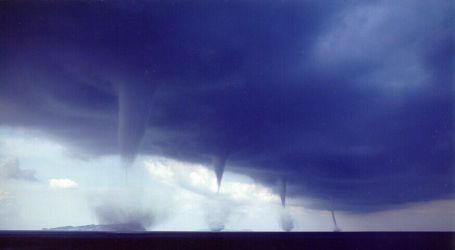
Tornado Season Intensifies, Without Clear Scientific Consensus On Why. An omen? The End Of The World? Is there a 7th day in my 7-Day Outlook? I'm happy to report that there is. The flurry of tornadoes is worrisome, probably the result of a lingering La Nina energizing the jet stream, and especially large north-south temperature contrast combining with excessive wind "shear" aloft to spin up these rare and violent storms. Here's a timely article from the New York Times: "KANSAS CITY, Mo. — All the warning sirens echoing across the Great Plains, Midwest and Southeast this month leave little doubt that the tornado season — which has plowed a trail of destruction through communities from Oklahoma to Wisconsin to Georgia — is off to an unusually busy start. So far this year, tornadoes have killed 41 people and torn apart countless neighborhoods and, this weekend, one major airport. Now, as the country braces for several more days of potentially violent weather, meteorologists say the number of April tornadoes is on track to top the current record. There have been, according to preliminary estimates, about 250 tornadoes so far this month and, in all likelihood, more are still to come, said Greg Carbin, the warning coordination meteorologist for the National Weather Service. “It’s unusual but it does happen,” said Howard Bluestein, a meteorology professor at the University of Oklahoma who specializes in tornado research. “This isn’t a sign that the world is about to end.” Those same experts note that drawing conclusions about the true size of, or reason for, an increase in tornado activity is difficult because historical statistics are unreliable due to changes in the way storms are tracked and measured."

USA Tornadoes Last 48 Hours. Here is a great new site, tornadopaths.org, (courtesy of the University of Michigan) that tracks all the (confirmed) tornadoes, nationwide, for the last 48 hours - raw data courtesy of SPC, with an assist from Google on the base maps. Pretty powerful.

Tornadoes On This Date. Tornadopaths.org has more functionality - the ability to call up a database of all tornadoes that have touched down on the USA on a specific date. On April 26, 1984 an F-3 tornado touched down in the St. Anthony area of MInneapolis, killing one person, injuring 52 - on the ground for .55 miles, according to NOAA.

10 Most Destructive Tornadoes In U.S. History. Since we're on the subject of tornadoes (and this may wind up being another historic week for the sheer number and intensity of tornadoes impacting the USA) I wanted to include this excellent site, outlining the 10 most destructive tornadoes in U.S. history, courtesy of Jenna Ellis and onlinecertificateprograms.org. BTW, a destructive 1899 Wisconsin tornado made the cut. Hopefully we won't be adding any new tornadoes to this Top 10 list anytime soon: "Tornadoes are one of nature's most devastating and frightening phenomena, and the American Great Plains are nicknamed "tornado alley" for a reason. Throughout American history, the American Midwest has been struck by some brutal tornadoes that have made their mark on American culture and history. Here are the 10 most destructive tornadoes in U.S. history:
- The Tri-State Tornado of 1925: The March 18, 1925, Tri-State tornado is considered to be the worst tornado in U.S. history. This destructive storm first struck southeast Missouri and made its way northeast to Illinois and Indiana, crossing through three states. The F-5 Tri-State tornado had a ground speed of 62 mph and was a quarter to three-quarters of a mile wide. Over the course of three hours, the tornado traveled 219 miles and killed about 690 people and injured another 2,000 people. Damages were estimated at $18 million.
- The Lubbock, Texas Tornado of 1970: This May 11, 1970 twister devastated the west Texas town of Lubbock, home to Texas Tech University. While much of the campus was spared, downtown Lubbock was reduced to rubble, injuring 200 or more and killing at least 20 people. Looting and flooding after the storm created problems for property owners long after the storm had passed and the damage totaled well into the millions of dollars.
- The Waco Tornado of 1953: This famous twister destroyed most of downtown Waco, even brick buildings that were thought to be very sturdy and reliable. The tornado struck at the end of working hours and killed 114 people. 600 more were injured. The twister famously crushed a full size vehicle down to a height of only 18 inches and caused over $41.2 million in property damage."
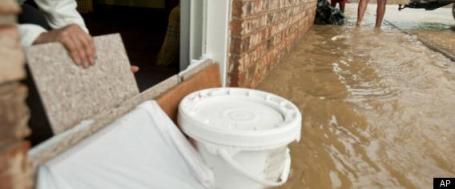
Arkansas Storm Leaves 7 Dead, Town Of Vilonia All But Wiped Out. An update from Huffington Post: "VILONIA, Ark. -- Arkansas Gov. Mike Beebe says rescuers have accounted for everyone who lives in the tornado-struck town of Vilonia and that the death toll in the rural community will likely remain at four. Rescue crews continue, however, to search for survivors – or bodies – in nearby Garland County where the storm also hit hard late Monday. Beebe toured Vilonia on Tuesday morning. He says he is impressed with the scale of the twister, which left a broad trail of destruction through the town of 3,800, some 25 miles north of Little Rock. The storm system killed at least seven people, including three who drowned in floods in northwest Arkansas."

Historic Flooding Unfolding Along Mississippi and Ohio Rivers. Accu Weather has the latest: "As if tornadoes and damaging thunderstorms were not enough, historic flooding is also threatening the Mississippi River, below St. Louis, as well as the lower part of the Ohio River. The rising waters are expected to top levels set during February 1937. This mark is the middle Mississippi Valley's equivalent to the 1993 event farther north along Old Man River. Even if rain were to fall at a normal rate for the remainder of the spring, the consequences of what has already happened in the Midwest will affect way of live, property, agriculture and travel/shipping/navigation for weeks in the region. While the amount of evacuees currently numbers in the hundreds, it could soon number in the tens of thousands as levees are topped or breached and rivers expand their girth into more farming communities, towns and cities."

Softball Size Hail. This is what fell out of the sky in Alilene, Texas on Monday. Thanks to Talina Ramirez and Facebook for sharing this (headache-inspiring) hailstone with the rest of us.

Do The Shifts Of The Earth's Axis Caused By Earthquakes Alter World Weather? The short answer is no, according to this explanation in the N.Y. Times: “In short, no,” said Allegra N. LeGrande of the Center for Climate Systems Research at Columbia University. “The changes are simply too small.” Researchers at the NASAJet Propulsion Laboratory calculate that the recent earthquake in Japan pushed the Earth’s rotational axis more than 6.5 inches, while the quake in Chile in 2010 shifted it by 2.8 inches, through slightly altering the distribution of mass across the Earth. But “natural shifts in the Earth’s mass in the atmosphere and oceans also cause changes of about 39 inches in the rotational axis each year,” Dr. LeGrande said. “In other words, the shifts associated with earthquakes are much smaller than the unnoticeable shifts that occur each year anyhow.”

"Super-Fat Rainbow". Here's a photo from Jeff Master's latest edition of Wunderblog, which includes the following: "A 1/2 mile-wide tornado smashed through Vilonia, Arkansas last night, killing four and destroying 50 - 80 houses. Vilonia is a small town of 3,800 north of Little Rock. The storm system responsible produced 38 suspected tornadoes yesterday, and also dumped 10 - 15 inches of rain over portions of Arkansas and southern Missouri. Flash flooding from the heavy rains killed four people in Arkansas last night. The heavy rains have also resulted in overtopping of the Black River levee near Poplar Bluff, Missouri, and over 500 homes have been evacuated in the town due to fears that the levee might fail. Poplar Bluff has received 12.86" of rain over the past three days, as of 11am EDT this morning. The greatest rain gauge-measured precipitation from the storm occurred in Springdale, Arkansas, where 17.09" inches has fallen."

The Minnesota Planetarium Deserves A Good Home. Full disclosure: I am on the Board of the Minnesota Planetarium Society. I'm still hoping that we can find a good, long-term home for the kind of world-class planetarium Minnesota deserves. We are one of the few major metropolitan areas that doesn't have a planetarium. Our kids (and their parents) need the sense of wonder that can only come from a thorough knowledge of the cosmos. With the ongoing state budget crisis it's an uphill fight, but a lot of smart, well-intentioned people are hoping that the vision can still become a reality in the years ahead. Here's a Star Tribune editorial from Laura Watterman Wittstock:
"We take looking up at the skies for granted. The stars and moon will always be there. Only the headline of a transit of Venus or the infamous blue moon calls our attention to the reality that the firmament is not fixed and we are a tiny population in a galaxy far away. Romantic maybe, but definitely not something we should take for granted for ourselves but especially not for our children.
Most people agree that we should educate ourselves all of our lives. There is no room for limited thinking, especially not for the coming generations. It will comfort many Minnesotans to know that the MN Planetarium Society just passed an important 100,000 mark. That many school children have now had lessons about the cosmos, given by Planetarium teacher Sally Brummel. This teacher and a small crew of volunteers, consultant Joel Halvorson, and staff member Mike Linnemann have traveled extensively to bring a portable dome and astronomy program to schools.We have a few small planetariums like the ones in Duluth, Hibbing, or New Ulm, but only one serves the entire state: the Minnesota Planetarium and Space Discovery Center. But, you can look at a list of the state's planetariums and observatories and not find the Minnesota Planetarium. That's because when the Minneapolis Central Library was torn down in 2003 to build the new Central Library, the Planetarium lost its home. Then known as the Minneapolis Planetarium, four million visitors went there over 50 years. Creaky, old equipment went into the dustbin as plans were made for a shining new edifice to go on top of the new Central Library. Now, eight years later, Minnesotans still have no state planetarium. Even with $22 million in bonding, there was not enough to build. The new planetarium, with the most modern equipment and software has had to wait for a greater will and the gifts needed to make it a reality."

"Worst Weatherman" Campaign. O.K. This is a spoof, a commercial for Subaru, but it's pretty funny. And one of our amazing developers and graphic artists, Nick Shipes, created the weather maps used on this advertising campaign. This guy is obviously confused - a perpetual state of affairs for most TV meteorologists. Yes, there really is "too much information!"

Record Rainfall. Yes, Tuesday redefined the meaning of wet (and foul) with a whopping 1.46" of rain, a new daily rainfall record for April 26, busting up the old record of 1.26" set on April 26, 1893. The high of 57 was recorded shortly after midnight - temperatures most of the day held in the 40s with a horizontal rain. Typical for the second or third week of March, but late April?
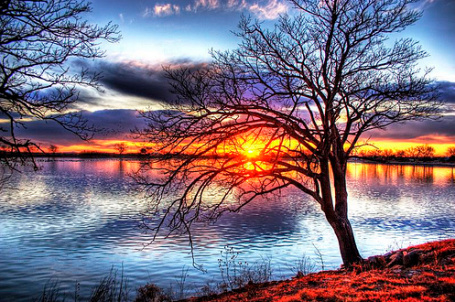
Paul's Conservation Minnesota Outlook for the Twin Cities and all of Minnesota:
TODAY: Windswept showers. Raw. A little wet snow mixes in over Wisconsin early. Winds: N 15-25. High: 45
WEDNESDAY NIGHT: Lingering showers and sprinkles. Low: 37
THURSDAY: Showers linger in the morning - skies brighten by afternoon. High: 54
FRIDAY: Spring fever returns. Lukewarm sun. A few T-storms possible late Friday night. Low: 42. High: 68
SATURDAY: AM storms, then partial clearing. Drying out by afternoon. Low: 50. High: 62
SUNDAY: Cloudy, windy. Few sprinkles. Low: 40. High: 53
MONDAY: Unsettled, isolated PM shower? Low:39. High: 56
TUESDAY: Milder, few T-storms possible late. Low: 41. High: 62
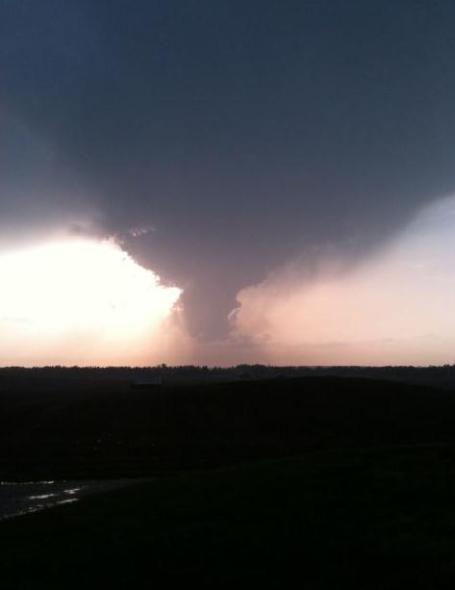
Silver Lining
It's been a rough spring for all of us. People see me coming, groan, look away, mutter words I probably don't want to hear. "Lalalala.." And that's just family members. The general public is pretty disgusted with the state of our tenuous spring. A nagging La Nina is at least partially responsible for unusually cool weather over the northern tier states. That, in turn, is creating enormous north-south temperature contrasts and swirling winds aloft capable of mutant T-storms. We're on track for a record spring for tornadoes nationwide: 559 preliminary reports of tornadoes in April, according to SPC. This may turn into the most severe spring America has experienced in several decades.
The slushy snow piling up in western Wisconsin this morning is annoying, but at least it won't take your roof off or leave you homeless. There's something to be said for cool (stable) air. Tornado season has been pushed back a few weeks, and for that I'm giving (reluctant) thanks. Windswept showers wind down later today, skies brighten tomorrow with a shot at 70 Friday. A thundery start Saturday gives way to a windy, cooler weekend with lot's of clouds.
Stormy, cool & unpleasant, but tornado-free.

"Increased CO2 causes more drought and floods which is BAD for plants. Saying that CO2 is good for plants is like telling a man on fire to take vitamins because they are good for him."
- Scott Mandia, climate scientist, SUNY College of New York.
"If you are having chest pains and 3 brain surgeons tell you it is acid reflux, and 97 cardiologists say you're having a heart attack, who are you going to believe?"
- Tenney Naumer, Brazilian climate scientist, author of Climate Change: The Next Generation blog.

Why Google's Climate Change Action Matters. Here's an article from Computerworld: "Google is addressing global warming by cutting its greenhouse gas emissions. It recently announced an agreement to buy 100 MW of power from an Oklahoma wind farm, one of a number of things that Google has done to reduce its environmental impact. But what Google is doing is not enough. Atmospheric carbon dioxide levels are rising steadily and have reached 392 ppm (parts per million). Some argue that the safe upper limit is 350 ppm. The science is clear about the connection between rising carbon levels and planet temperatures. What is less clear is how the climate system will respond to it, and what the tipping points will be. Will arctic ice melting (illustration above is from the National Snow and Ice Data Center) amplify the melting of Greenland's ice and speed sea level rise? Will warming in the arctic result in release of methane gas trapped in permafrost? Will a warmer arctic increase droughts in some areas and flooding in others?"

Strong Demand Revs Up Profit At Ford. Here's an article from Tuesday's Wall Street Journal. As the price of gasoline goes over $4/gallon car companies are (quickly) realizing there's plenty of green to be made by going green: "Ford Motor Co., showing little impact from rising U.S gasoline prices or the Japan earthquake, said its first-quarter profit rose 22%, fueled by higher vehicle sales and pricing, especially in North America, its most important region. An expanded portfolio of fuel-efficient vehicles helped the company grab more consumers as rising gas prices pushed shoppers in March away from larger cars and pickups to smaller vehicles, such as the Fiesta subcompact, the company said."

Cooling On Global Warming. Here's an article from the Chicago Tribune: "What the heck went wrong?" That, apparently, is the question roiling the environmental community as it realizes that the fight against climate change has fizzled. As Brad Plumer writes in the New Republic, everything was looking great in 2008 for a sweeping effort to make good on candidate Barack Obama's pledge to start turning back the rising oceans. The Democrats held Congress. Both John McCain and Obama had promised to push for capping carbon emissions. Corporations had gotten on board. Al Gore and "An Inconvenient Truth" had seemingly softened up the public to the point where it might go along with whatever a popular president promised. "Instead, the climate push was ... a total flop," laments Plumer. And, of course, Plumer's right, though not entirely for the reasons he claims. Climate change is dead as a major political issue for the foreseeable future. Don't believe me? Check out Obama's remarks in his weekly radio address last weekend. It was all about energy policy, and yet not once did he talk about climate change."

Poll: Americans Chilly On Global Warming Fears. The New York Daily News recaps a growing trend: one chilly, snowy winter and an extended economic downturn has created a new sense of complacency when it comes to climate change: "Global warming isn't making Americans sweat as much as it used to do. More than half of the U.S. respondents to a new Gallup Poll said it posed a "somewhat serious" or "very serious" threat, but the percentage slipped from 63% in 2007-2008 to 53% last year. Concern about global warming also declined in much of Europe, where the fear factor among French respondents dropped steeply from 75% in 2007-2008 to 59% last year. That's still much higher than in much of the rest of the world, where 42% last year said global warming was a serious threat. That is the same percentage as in 2007-2008, according to Gallup. "World residents' declining concern about climate change may reflect increasing skepticism about global warming," Gallup speculated."
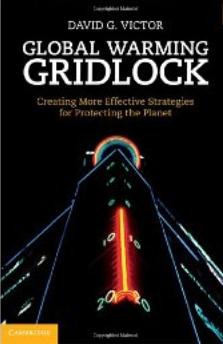
Book On Global Warming: Replace Wishful Thinking With Bottom-Up Initiatives. Newswise has an overview of a new book with a novel (?) approach to climate change: "Victor provides an incisive analysis on why current policies on global warming are not working—and offers a clear roadmap for better results. Arguing that the current focus on solely reducing emissions is misguided and unrealistic, Victor asserts that a better approach would be to create “bottom-up” policies at the national level that transform the way energy is used. Rather than aiming for progress at an untenable pace—which often does not take into account what governments either can or are willing to do—he demonstrates that progress on climate change can be achieved through three key steps: creating “climate clubs” that target incremental change; making incentives for technological innovation; and adapting to the currently warming environment."
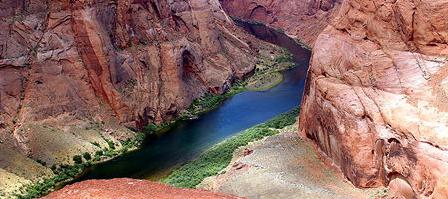
Climate Change Could Hit Western U.S. Water Supply. TGdaily.com has an article focusing on a dwindling natural resourse in the southwestern USA:
"Climate change is likely to cut water flow in many of the American West's rivers by as much as a fifth, a report from the Interior Department warns. The affected rivers supply water to eight US states. The report to Congress by the Department's Bureau of Reclamation examines future water supplies across eight major river basins, including the Colorado, Rio Grande and Missouri. "Water is the lifeblood of our communities, rural and urban economies, and our environment, and small changes in water supplies or the timing of precipitation can have a big impact on all of us," said Interior Secretary Ken Salazar. "This report provides the foundation for understanding the long-term impacts of climate change on Western water supplies and will help us identify and implement appropriate mitigation and adaptation strategies for sustainable water resource management." The report predicts a temperature increase of 5-7 degrees Fahrenheit across the region. It foresees an increase in precipitation over the northwestern and north-central portions of the western United States and a decrease over the southwestern and south-central areas."
Texas Governor Prays For Rain While Denying Climate Change. Hey, I'm a Christian, I pray (a lot), so I'm not in any way minimizing the power of prayer by including this post. But just about every climate model shows Texas, and much of the southwest, trending drier in the years to come. Climate denial is not a sustainable response to what's happening now, and what's predicted to happen in the decades ahead. Sustainablebusiness.com has the story: "As climate change denial has reached a fevered pitch in this country, its presence is becoming undeniable. Over the past year, there's been a series of unprecedented events: massive floods in Australia and Pakistan, enormous fires in Russia, never-before-seen strings of tornadoes in the midwest US, fluctuating droughts and downpours in the southeast US - dropping rain in one day that's usually seen in an entire year. Now, the drought in Texas is worse than at the height of the 1930s Dust Bowl. And what does Texas Governor Rick Perry do? He asks Texans to pray for rain. A spokesman for the state's forest service describes the fires that have broken out across the state this way, "This is a situation of historic proportions. The fuels are so dry. The winds are astronomical. The behavior of the winds is a perplexing situation. It's never been like this before." Meanwhile, the carbon content of our atmosphere stands at 390 parts per million - scientists have warned over and over again that we can't exceed 350."

HI Paul, AKA Doug Kruhoeffer. I enjoy reading your blog. As you have a lot of respect as an author and writer and telling things as they are and am wondering what your take is on the facts from the Fukashima Event as it unfolds. Helen Caldicott is a pediatrician who has the best interests of the next 7 seven generations of children at heart.
ReplyDeleteA META Issue.
From my Friend Frank Verkley of Canada on FB
http://www.youtube.com/watch?v=TMXvpWoHzeE
When I hear what she has to say in this press conference I am in awe at what I have not been told. This frightens me. I encourage you to watch this 9.54 minutes and perhaps you will alter what you believe about this.
http://www.youtube.com/watch?v=TMXvpWoHzeE
I just posted this on my Facebook Page, Thomas Glessner Weaver and I know this is something Peg would want to know the facts about. Please consider writing about this on your blog and bringing it to the attention of those who can make choices for the next 7 generations. What do you know and think?
Thanks Tom Weaver, AKA Dr Tom
S